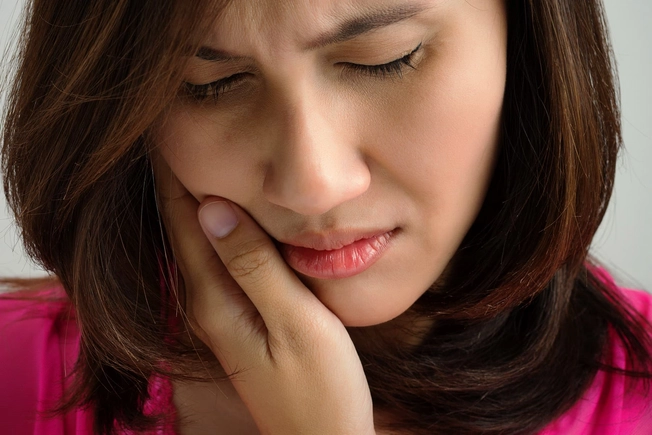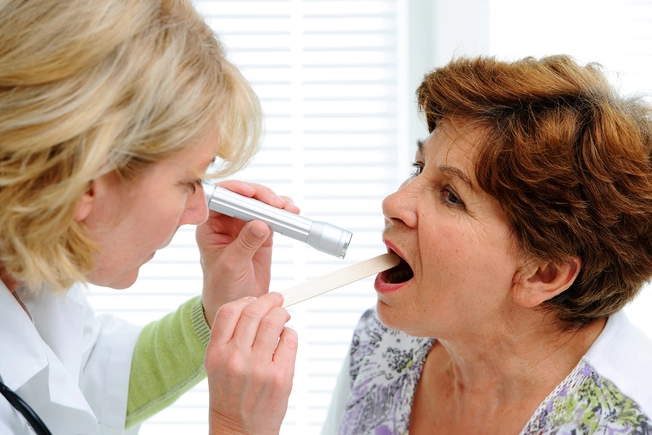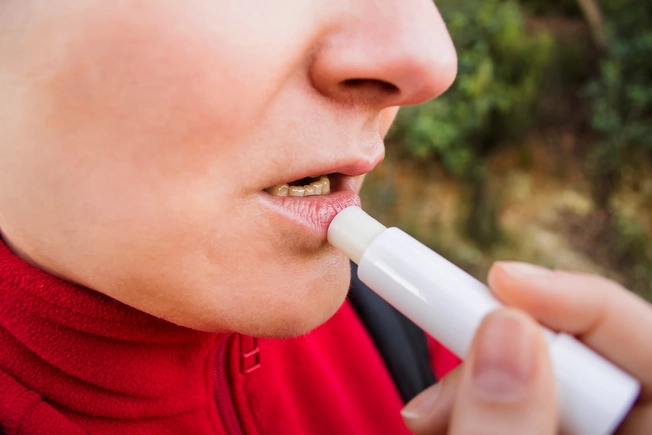- Overview
- Causes, Risks & Prevention
- Symptoms & Types
- Tests & Diagnosis
- Your Cancer Care Team
- Treatment & Side Effects
- Treatment Support
- Living With
- Remission & Recurrence
- Support & Resources
- Appointment Prep
- View Full Guide
Guide to Oral Cancer


What Is It?
Oral cancer affects the lips, gums, tongue, roof of the mouth, insides of the cheeks, or the soft floor of the mouth under the tongue. It’s called “oropharyngeal” when it affects your tonsils, upper throat, or soft palate, where the roof of the mouth meets your throat.

What Are the Symptoms?
You may not notice any. But the most common one is a sore inside your cheek or lip that won’t heal. You might feel a lump or see a patch of red or white in your mouth. Other signs are mouth numbness, pain, bleeding, or weakness, as well as voice changes, ear ringing, and a sore throat that won’t go away. Teeth or dentures might get loose for no clear reason. But these also could be signs of less serious problems. Tell your doctor if you notice any symptoms so they can help you figure out the cause.

Who Gets It?
Women and people older than 45 are more likely to get oral cancer, though it can happen at any age. Those with fair skin are more likely to get cancer of the lip. And some studies show that people with weaker immune systems, which happens with age or a long-term illness like HIV, get oral cancers more often.

Tobacco Use
Almost 90% of those who get cancer of the head or neck, including oral cancer, use tobacco or spend time around secondhand smoke. The form doesn’t matter -- it could be cigarettes, cigars, snuff, or chewing tobacco. Pipes may be special offenders, particularly in the area where the lips meet the pipe stem. People who use marijuana may also be more likely to get the disease.

Alcohol and Oral Cancer
Booze can raise your odds for the disease, specifically if you drink a lot (more than a drink or two in a day) on a regular basis. And if you use tobacco as well, your odds go up more, especially after age 50.

A Link to HPV?
You typically get human papillomavirus (HPV) through sex, including oral sex. There are many types of the virus, some closely linked to cancer. There is some evidence that the infection leads to cancer at the base of the tongue or in the tonsils. A vaccine for HPV may protect against the types that cause oral cancer, but scientists don’t know for sure. To lower the chances you’ll get the virus, use condoms or dental dams each time you have sex.

Getting a Diagnosis
Doctors and dentists usually find oral cancer during routine checkups. If they notice signs of a problem, they’ll look carefully inside your mouth and throat, sometimes with a special lighted tool, and may feel your jaw and neck for lumps or patches. If they find something, a test called a biopsy will usually help them confirm or rule out cancer.

Biopsy
It’s often the only sure way to know whether a lump is cancer. Your doctor removes a small piece of tissue to send to a lab for testing. They might use a needle, a scraping tool, or do minor surgery to cut out a piece of tissue. Your dentist might use a simpler method at first: a small brush to gather cells from a suspicious spot. In this case, if the lab finds cancer, you’ll need a more traditional biopsy to confirm it.

HPV Test
Your doctor could also test the biopsy tissue for HPV. The result helps your doctor figure out the extent of your cancer and the best treatment options. People with cancers linked to this virus tend to do better than those with other types of cancer.

Imaging Tests
Doctors can use different tests to look at the organs and structures in and around your mouth. They include X-rays, MRI, CT scans, ultrasound, and PET scans. By themselves, they can’t diagnose your cancer, but your doctor might use one or more of them to look for a tumor, see how well treatment is working, or check if cancer has come back.

Treatments: Surgery
It’s often the first treatment doctors try, especially when your disease is in the early stages. Your doctor will try to remove the tumor as well as an area, or margin, of tissue around it to be sure that all the cancer cells are gone. In some cases, this could mean cutting out part of the tongue, jawbone, or roof of the mouth. You may need more surgery later on to make those areas look and work well again.

Treatments: Radiation and Chemo
Radiation uses high-energy particles to kill cancer cells or slow their growth. In chemotherapy, drugs in the form of pills or injections travel through your bloodstream to target cancer cells. You might get one or both treatments, depending on the type of cancer and how long you’ve had it. Even if you have surgery, you may need one or both of these treatments to help ensure cancer doesn’t return.

Can You Prevent It?
A few basic health habits can lower your chances of getting oral cancer.
- Stay out of the sun. Too much is linked to lip cancer. Cover up with hats and sunscreen of SPF 15 or higher.
- Don’t use tobacco, and limit the alcohol you drink.
- Brush, floss, and go to the dentist regularly. It makes you less likely to get cancer, and it also helps you catch it early when it’s easier to treat.
- Eat a healthy diet with plenty of vegetables and fruits. A lack of vitamin A -- found in oily fish, milk, eggs, spinach, carrots, and beef liver -- could lead to certain oral cancers.